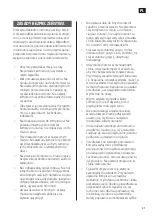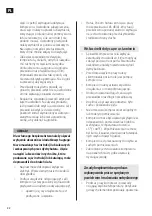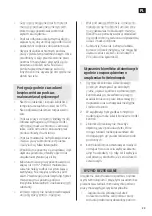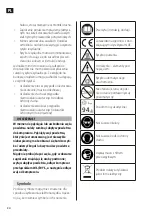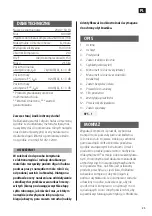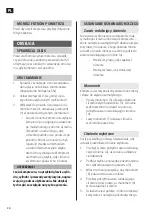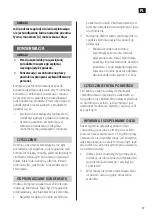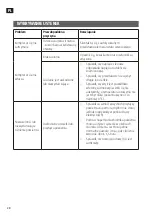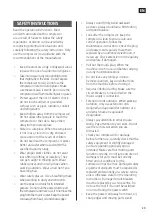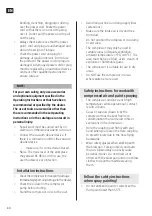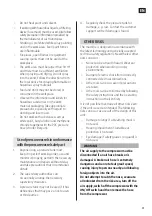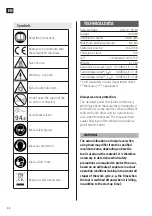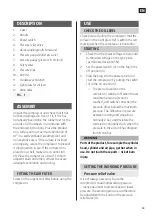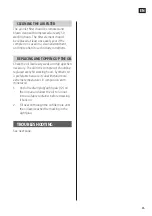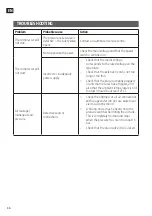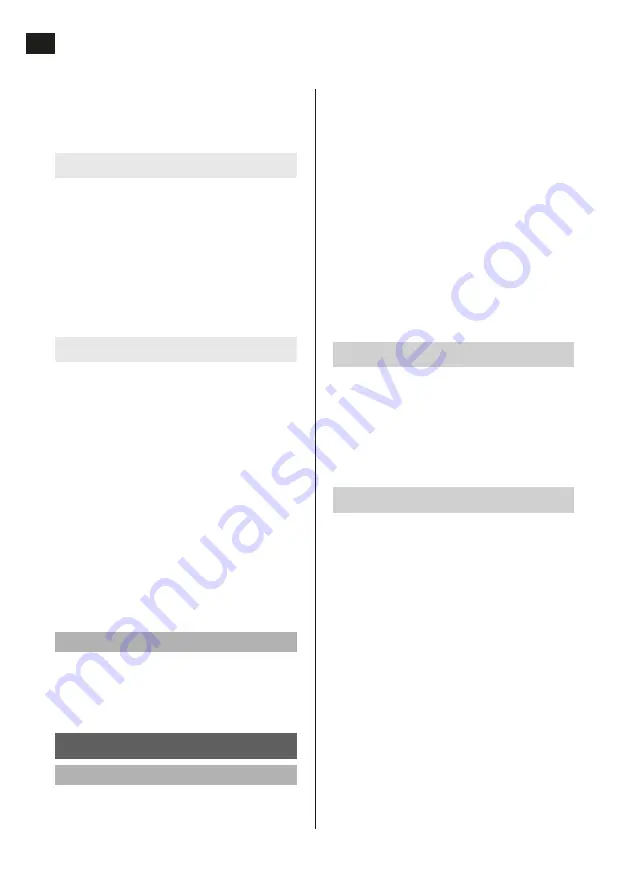
EN
34
• Maintenance and any repairs must only
be carried out by qualified personnel.
The compressor is designed to function for a
long time with a minimum of maintenance.
Proper maintenance and regular cleaning are
essential for the product to work satisfactorily.
Before doing any work on the product, make
sure that:
• the power switch is turned off (position 0)
and that the plug is unplugged from the
power point.
• the air tank is completely relieved of
pressure (both pressure gauges show 0
bar).
CLEANING
Keep the ventilation openings free from dust
and debris, and clean the compressor at
regular intervals with a soft cloth moistened
with a mild detergent. Never use solvents such
as petrol, alcohol, ammonia solution etc., they
can damage the plastic parts.
DRAINING CONDENSATE
Condensation collects in the air tank when
air is compressed. This condensation must
be drained at regular intervals to prevent
corrosion in the tank.
1. First reduce the pressure in the air tank to
about 2 bar by connecting and running a
pneumatic tool.
2. Open the drain valve (14) underneath the
air tank by turning it slowly.
– The condensate is then pressed out
of the air tank. Note that the water
can be pressed out with some force
by the residual air pressure, and
therefore the recommended
maximum pressure when draining
condensation is 1 to 2 bar.
– Turn clockwise for higher pressure.
– Turn anticlockwise for less pressure.
Pressure gauge
The compressor has two pressure gauges and
one connection for an air hose.
• The pressure gauge on the right (6) shows
the set pressure at the air outlet (5). The
outlet pressure can be adjusted with the
knob on the pressure relief valve (4).
• The pressure gauge on the left (7) shows
the pressure in the air tank.
Outlet pressure
Follow the instructions below to set the correct
outlet pressure.
1. Turn the knob on the pressure relief valve
(4) anticlockwise until the pressure is fully
relieved.
2. Connect the pneumatic tool to be used to
the quick-coupling on the air outlet (5).
3. Run the pneumatic tool for a moment so
that the pressure gauge (6) shows the
correct pressure.
4. Turn the knob on the pressure relief valve
(4) clockwise until the pressure gauge (6)
shows the required air pressure.
5. The setting is now complete and the
pneumatic tool can now be used.
NOTE:
The pressure gauge (6) can show a wrong
reading if no pneumatic tool is connected
when setting the outlet pressure.
MAINTENANCE
NOTE:
• Always switch off the product and pull
out the plug before doing any work on
the product.
Summary of Contents for 013747
Page 4: ...1...


